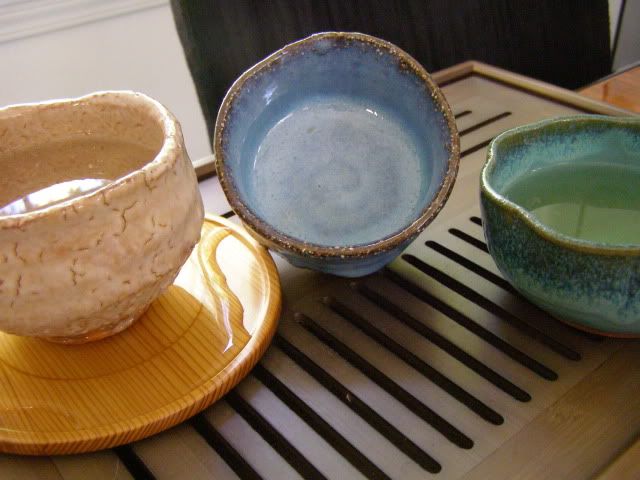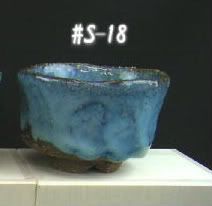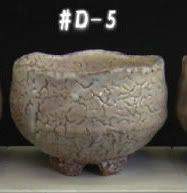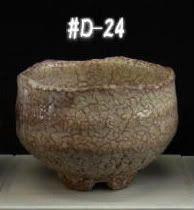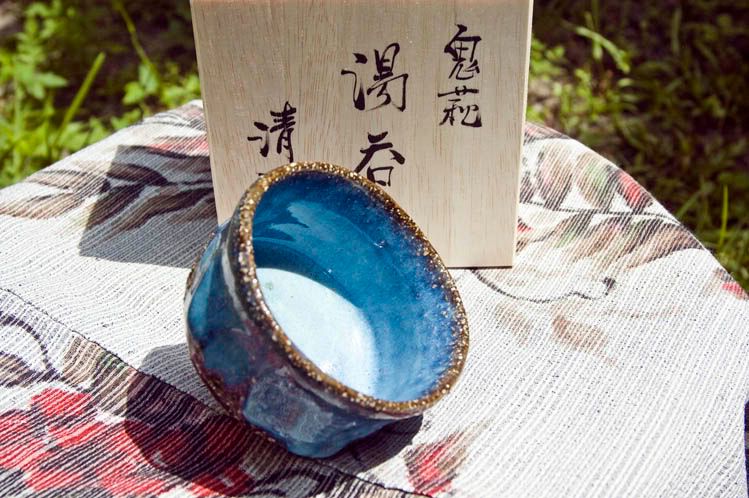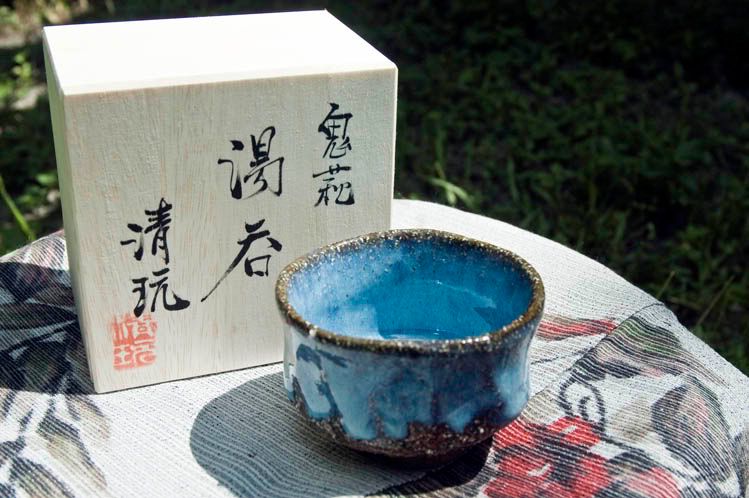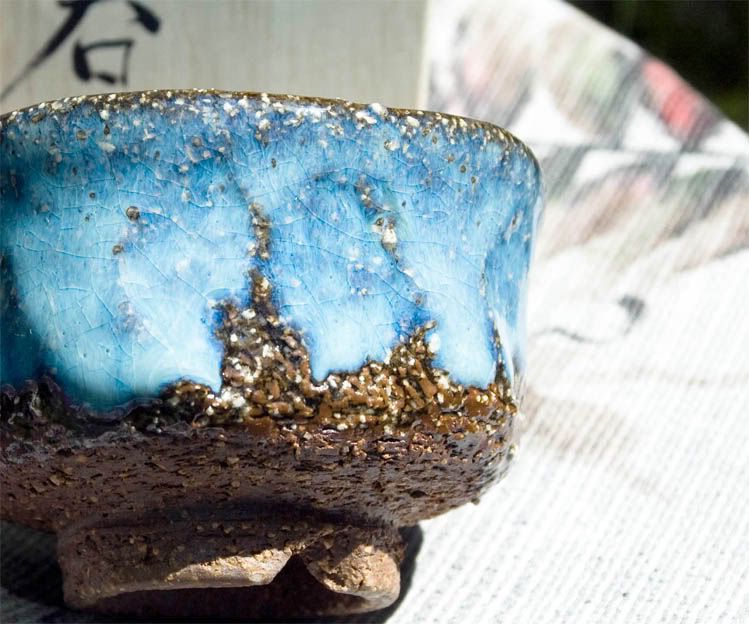seeker,Seeker wrote:1. Due to the porous nature of Hagi, is there any danger of leaching clay and/or glaze elements into the tea (I imagine so, so perhaps the better question is - are the elements used in Hagi creation safe? I'm hearkening back to Raku here, and some of the discussions about safety and Raku).
Hi. Thought I'd touch on a little of this for you. This is a complex subject, but I'll try to simplify it. My apologies if this still gets too long and involved
First of all, to be absolutely fair let's not single out Hagiyaki here. ANY glaze on the inside of a piece has the potential to leach some of its chemical components into the contents of a pot. The real issues, if there ARE going to be any, comes down to a couple of factors.
They are:
Duration of contact
Ph of the lechate (liquid in the pot)
toxicity of the glaze's components
percentage of the toxic component present.
The easy one to look at is the duration of the contact between the contents and the pot's glazed surface. In the case of stuff like chawan, the duration of contact is so brief that there is little time for any significant leaching to occurr. The interior of a teapot used to brew tea is of more concern in this regard than the liner glaze in stuff like chawan and yunomi. But in most all cases when it comes to teawares, the duration of "storage" in the vessel is generally pretty limited. So that is one big "plus" for not worrying too much over it unless the glaze stability is absolutely awful.
The next issue is the solubility of the actual glaze in the solution that is being stored in the piece. Exact glaze composition affects its resistance to the leaching of its constituient compounds into water or other stored liquids. The Ph of the stored liquid comes into play in this too, with either stronger bases or stronger acids exacerbating the leaching tendency. Storing highly acidic orange juice in a pitcher in the fridge is a whole different potential situation to look at. Tea is not all that strong.
The ideal stable glaze would be composed of pure SiO2, but that pure glass melts at such a high temperature that the undelying clay body wouldn't stand a chance. Plus without some Al2O3 (alumina) in the glaze to increase viscosity, it would run right off the pot.
So potters have to add stuff to the silica (SiO2) to lower the melting point to a useful range to match the maturing of the clay body and also some alumina to keep the glaze on the pot. These additions also affect the solubility of the glaze when comparet to a pure silica glass.
These temperature lowering additions are called fluxes, and there are a number of them including stuff like potassium oxide, sodium oxide, lithium oxide, calcium oxide, magnesuim oxide, and so on. To get these oxides into the glaze batch that is applied to the pot, potters source them through additions of stuff like ground feldspars, ground flint, and powdered clays.
Luckily, when it comes to most high temperature stoneware range glazes (those in the 1200 C and up range), the basic components of most glazes are pretty innocous as far as potential health impacts go. So even what might be called "bad" glazes, which might leach out components into the contents, can only leach out stuff that has very little or no health impacts.
The potential issues with this leaching really only can occur when there are one or more of the more toxic fluxes present, or one or more of the more toxic coloring agents present in the glaze.
Most everyone is familiar with the various admonitions about lead. No matter how lead is sourced into a glaze (carbonate, fritted, etc.), once it has been fired in the early part of the process in the kiln it becomes PbO (lead oxide). Lead oxide is a powerful flux on silica beginning at a low temperature. While lead lowers the melting temperature of silica, it also produces a very weak amorphous glass matrix structure. So lead glazed wares can certainly be very "suspect" for functional use.
But we also have to look at the first point here....which is how long the contents are in the piece. I'd still be very cautious with lead glazed pieces myself.
"Everyone" seems to know about lead. But there are other fluxing and coloring oxides that potters sometimes use that have some potential to possibly cause health problems. Interestingly, a lot of this subject has NOT been studied at all. At this time the US FDA only regulates two oxides in ceramics; lead and cadmium. So those are the only ones that have been studied in any depth.
Others of potential concern include ones like the flux barium oxide, and the colorants manganese dioxide and cobalt oxide. Even the leaching of copper oxide (some greens {Oribe} and blues) can be an issue for people with certain pre-existing health problems.
The biggest issues for the leaching of colorants like manganese, copper, and cobalt are glazes which contain them in high percentage levels and that exhibit overall or sections of semi-matt or matt micro-crystaline surface variations. These inclusions in the glaze matrix are compounds that are included in the glass in levels that the glass is not able to hold in solution as they cool, and on the cooling cycle they deposit on the outer surface. They are not bound into the glass very well at all.
A good example of this situation with manganese is some of the absolutely GORGEOUS youhen tenmokus that have that lovely sparkily crystally surface. (I have some lovely guinomi like this that I do not use!) Another variation that is of concern for leaching copper is the contemporary American oribe glazes that are very dark green with flecks of black mattish stuff on the surface in certain areas.
REMEMBER, a huge percentage of the glazes that studio potters use are colored with compounds of stuff like iron and titanium. These are basically non-issues even if thay do leach. Most glazes that are other colors have very low inclusions of the coloring oxides, and therefore those oxides present little leaching hazard for that chemistry.
You have to keep this all in serious persepctive. The biggest hazards from ceramic materials are experienced by the POTTERS themselves. All in all, the possible risks to the consumer are very, VERY small.
From what I know of Hagiyaki..... the glaze does not contain anything that would present a hazard even with that orange juice stored in it
Hope this helps. Sorry it was so long.
best,
.............john



